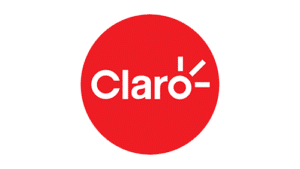A lot has been written recently about credential sharing. Most of it has stemmed from the Netflix announcement that discussed a reduction in subscribers, which in part was attributed to credential sharing. Whether it was a combination of credential sharing and a post-pandemic ‘snap-back’ as consumers start to get back to pre-pandemic lifestyles remains to be seen but fundamentally, why has credential sharing, which for so long has been ‘tolerated’, suddenly come sharply into focus?
My colleague Ken Gerstein recently said in a piece for the Los Angeles Times, that credential sharing has been tolerated by video service providers because it has been a form of growing audiences alongside building brand and service popularity. But there’s a point where such issues start to create business losses and limit growth. As they reach this tipping point, operators are being forced to take action.
What is the answer to this now arguably consumer-engrained behavior? Consumers have seen pop-ups advising them that if they’re using the credentials of someone that doesn’t live with them, they should purchase their own subscription. Equally, extension campaigns designed to offer credential sharers with their own subscription at a bargain introductory price have also been in evidence. Faced with a seemingly endless supply of available streaming subscriptions, such consumer behavior should not be a surprise. But this does present a challenge for operators. Any action that affects loyal customers may lead to churn, so one approach is to classify consumer / subscriber behavior into different categories, each with a different redress plan – for example, social sharing and fraudulent sharing.
But underneath the consumer and proposition dichotomy is a criminal problem. The consumer’s insatiable demand for content and the never-ending list of available OTT services has created a new opportunity for pirates. Consumers have started looking for alternative ways of preserving their entertainment status quo – namely websites where credentials are offered / shared for sale at bargain prices.
The good news is there are solutions that can help video service providers address this access credential sharing threat – which is a direct attack on both revenue and ongoing acquisition. If, for example, you add other piracy staples such as CDN content theft and app hacking on top of access credential sharing, it’s clear that a comprehensive solution is required to address the problem facing today’s video service providers.
NAGRA offers Active Streaming Protection to address exactly the challenges the market is currently facing. Designed as a solution framework through which video service operators can address multiple sources of piracy theft, Active Streaming Protection recognizes that no two organizations are the same. It works by using several tools, including comprehensive analytics and monitoring, to identify and remediate content and service-based threats. This creates a holistic view so the scale of specific threats can be understood; allowing the necessary countermeasures to be deployed.
Given the nature of today’s threats, the need for solutions that provide holistic streaming protection across all parts of the ecosystem is critical. Protecting just one element may remediate the threat at a specific point but other parts of the delivery ecosystem are still potentially left exposed and suspectable to attack. NAGRA seeks to help video service operators, through its Active Streaming Protection framework address the threat of streaming piracy, protect revenue and secure content investments.
To learn more, understand how other operators such as Vodafone are already using Active Streaming Protection or request a security assessment, get in touch; we’d love to continue the conversation.























